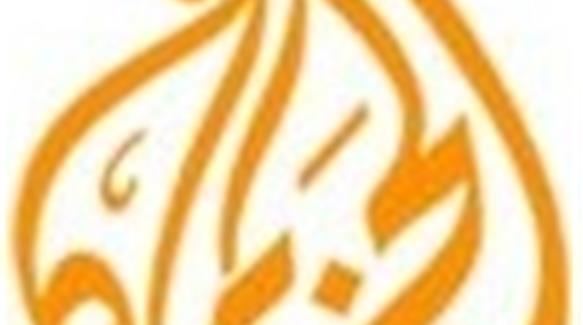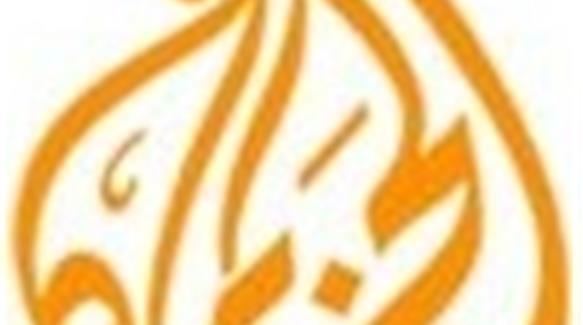Colouring books, colouring young minds
A fast-selling US children’s book aimed at remembering the events of 9/11 stands accused of using words as weapons.


“Rarely is the question asked: Is our children learning?” —
George W. Bush
Florence, South Carolina January 11, 2000
A commemorative 9/11 colouring book that rapidly sold out its initial ten thousand print run has opened up a vista to a few uncomfortable questions on the ten year anniversary of the attacks on the World Trade Center and Pentagon.
The Stream discussed this and gauged the online community’s reaction to the comic books.
Unsurprisingly, Ibrahim Hooper, from the Council on American-Islamic Relations (CAIR), aired his disgust at the publication of the book.
The publisher, Wayne Bell from Really Big Coloring Books, Inc. claims they approached CAIR, and asked them to be involved in the development of the book.
CAIR declined, as Hooper says, because it is clear when a “group has an agenda,” which in this case was to “smear Islam”, it’s pointless working together.
Bell says his goal is only “truth”. This is the publisher’s video, designed to promote the book and also answer critics like Hooper.
“We Shall Never forget” is a phrase pasted and posted in numerous places around the United States as the country remembers the decade that has passed, which many believe has changed the world.
But for many elementary or primary school-age children, a philosophical conundrum emerges.
Children that young are incapable of “never forgetting” something they did not experience or would not remember in the first place.
So as with most narratives of the past that involve national trauma – like the folklorish stories Serb children hear from their elders about Kosovo Polje, or Palestinian children hear about the 1948 Nakba – the task is assumed by the elders those in the know, in an effort to educate the malleable minds of the next generation so they might carry the patriotic mantle into the collective consciousness of an uncertain future.
Framing that narrative, is the contentious part.
When I entered my first year at the University of the Witwatersrand in South Africa, it had been barely six years since apartheid came to an end, ushering in democracy.
A literature professor gave us some “Black Consciousness” poetry to read and digest the context was rooted in the 1970s, at the height of apartheid, but the language, for some of my fellow students, was unduly harsh towards white South Africans.
They protested, and claimed he was opening up old wounds by giving us the poetry. What’s done is done. Can’t we move on and stop blaming whites?
The professor responded by handing out photocopies of an article by the writer Zakes Mda, where Mda noted the irony that those calling for an end to the discussion about apartheid – which ended just a few years ago and affected us all with its ongoing legacy – are the very people who insist on having a Holocaust memorial every year.
The lecture hall lit up with emotion.
Is there a moral relativism as to how anniversaries are marked?
As the discussion unfolded on air, @Hetshepsit_ tweeted in to @AJStream:

It would’ve been interesting to hear Bell’s response to that. He had agreed to appear on the show, before backing out at the last minute.
Here’s an excerpt from the book:
Children, the truth is, these terrorist acts were done by freedom-hating radical Islamic Muslim extremists. These crazy people hate the American way of life because we are FREE and our society is FREE. We must be prepared to know and understand the truth. America is FREE. Ask your mother and father, your teacher, your preacher what this really means. What does it mean to be FREE? Why are we a FREE people?

In what is possibly the most frequent use of the word free outside of any infomercial in history, the colouring book has employed words as weapons. Americans are FREE (always in caps) – the other side is therefore in a crude binary alternative, unfree.
“Freedom-hating radical Islamic Muslim extremists” is a mouthful. Even harder to say than al-Qaeda, it would seem.
And this is at the heart of Hooper’s criticism of the book: “The target audience, being children…doesn’t have the cognitive ability to differentiate between those who carried out the attacks and the faith of Islam itself and the 1.6 billion Muslims.”
Ali Doon wrote to us on facebook saying the colouring book should be viewed in the context of a broader, historical cultural prejudice towards those that the US is engaged in hostilities with:
Ali Doon:
This is part of the American Culture popeye the sailor man fought the Nazis, Superman fought the Commis and Japs… The people in power in US grew up with this type of attitude towards external enemies. Some extremists always abuse these sentiments. At least Muslims are not in “War Relocation Camps” as Japanese were subjected after Pearl Harbor.
Leila, @LSal92 tweeted in to @AJStream, saying:

Leila opens up another avenue in the discussion. Not only was there a cleric saying Mickey Mouse was haraam, or forbidden, for Muslim children, but who can forget Farfour, the Mickey Mouse-like character on Hamas-run Al Aqsa TV?
Farfour was ostensibly a children’s TV character designed to highlight the jarring, grinding inhumanity of the Israeli occupation as it affects Palestinians on a daily basis – but he also added a substantial dose of anti-Semitic venom in his broadcasts, attacking not only Israel but Jews on an ontological level.
Popular subtitled English-language translations of Farfour and his successor, Nahoul have been made available by MEMRI, The Middle East Media Research Institute.
While MEMRI does provide accurate translations of the Arabic-language videos, it is something of a cherry-picking paradise providing the equivalent of a website located somewhere in the East that posts translated excerpts of The Jerry Springer Show, televangelist Pat Robertson’s rants, and music videos of Lady Gaga – and portraying them as representative of American culture.
From colouring books to TV shows, ideology plays a major role in educating the next generation about a nation’s past – especially when it involves war.
It forces kids to take sides, before they were aware there were any sides to take forces them to maybe even pick a fight, before they were conscious that a fight ever existed.
And children – like the colouring books – come with a semblance of shape and form but we can create endless possibilities with how we choose to colour their minds.